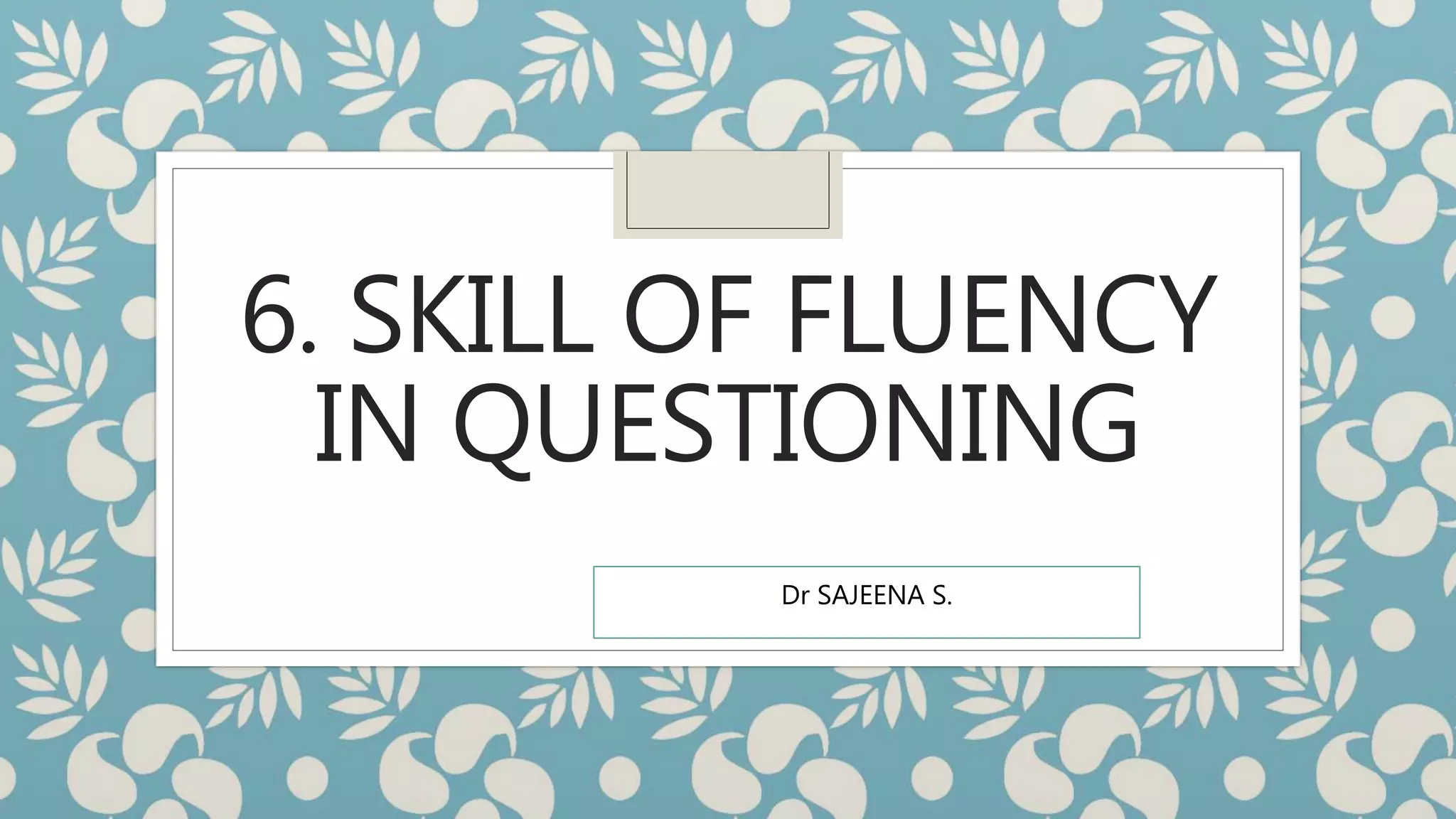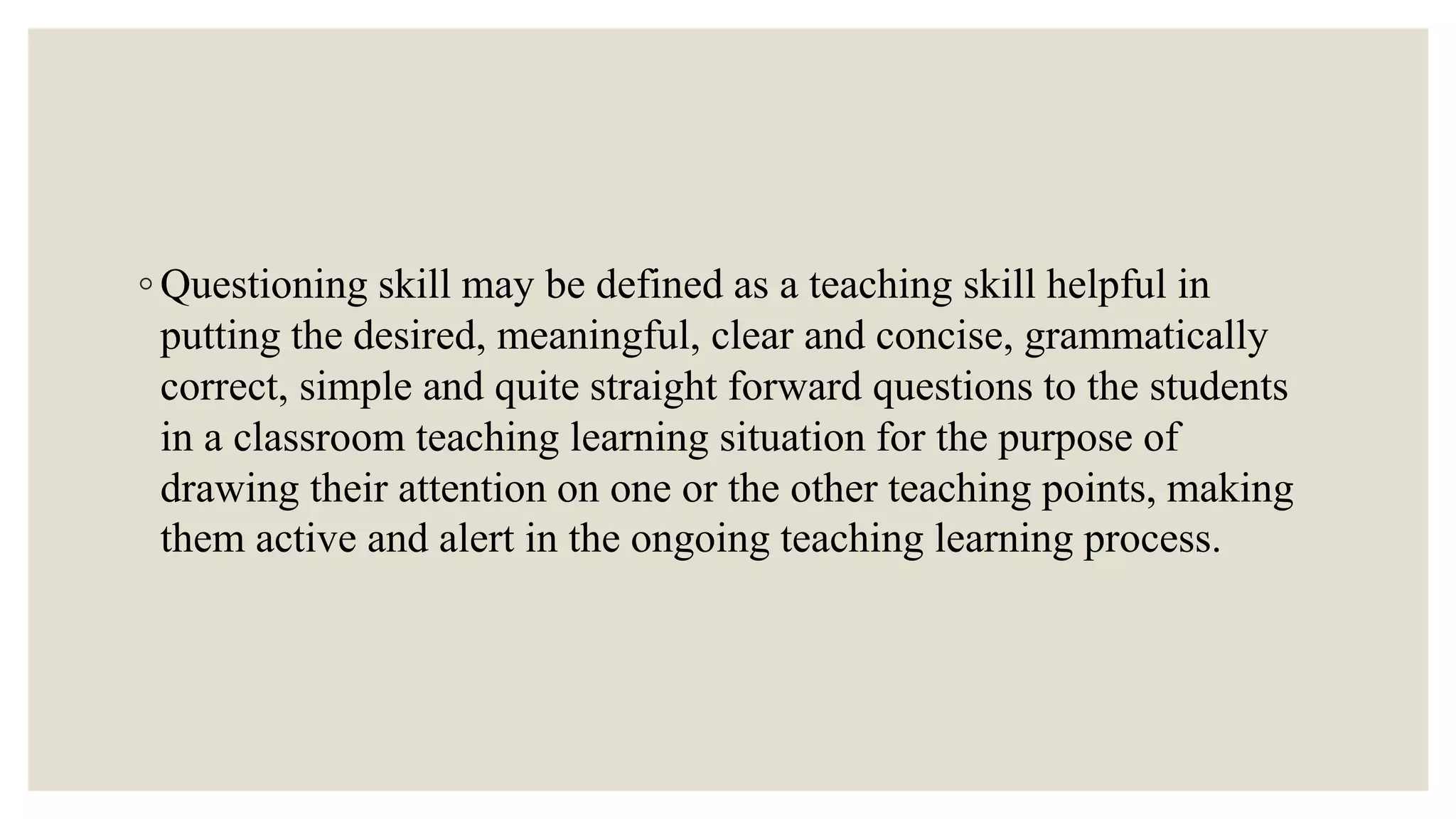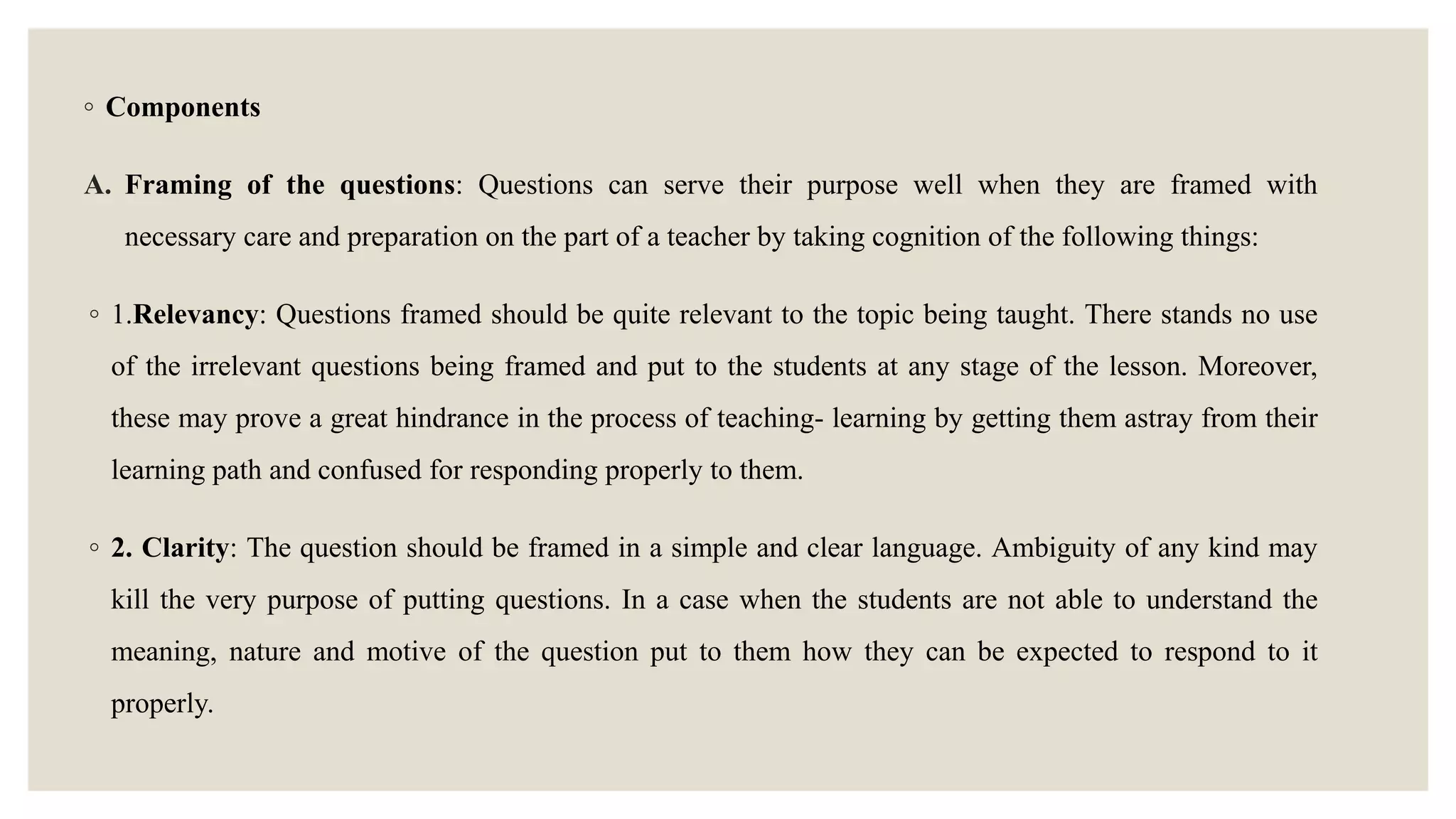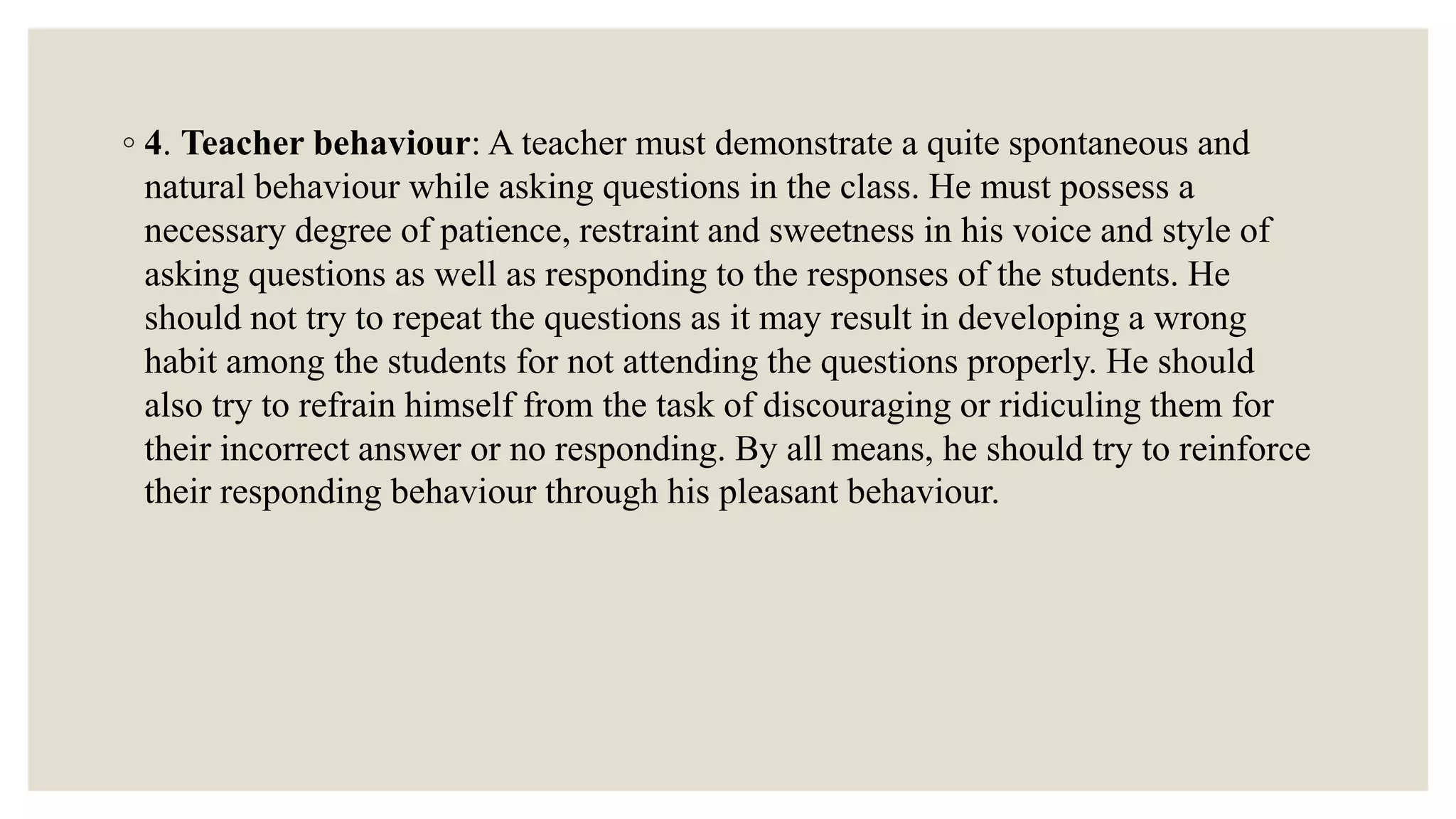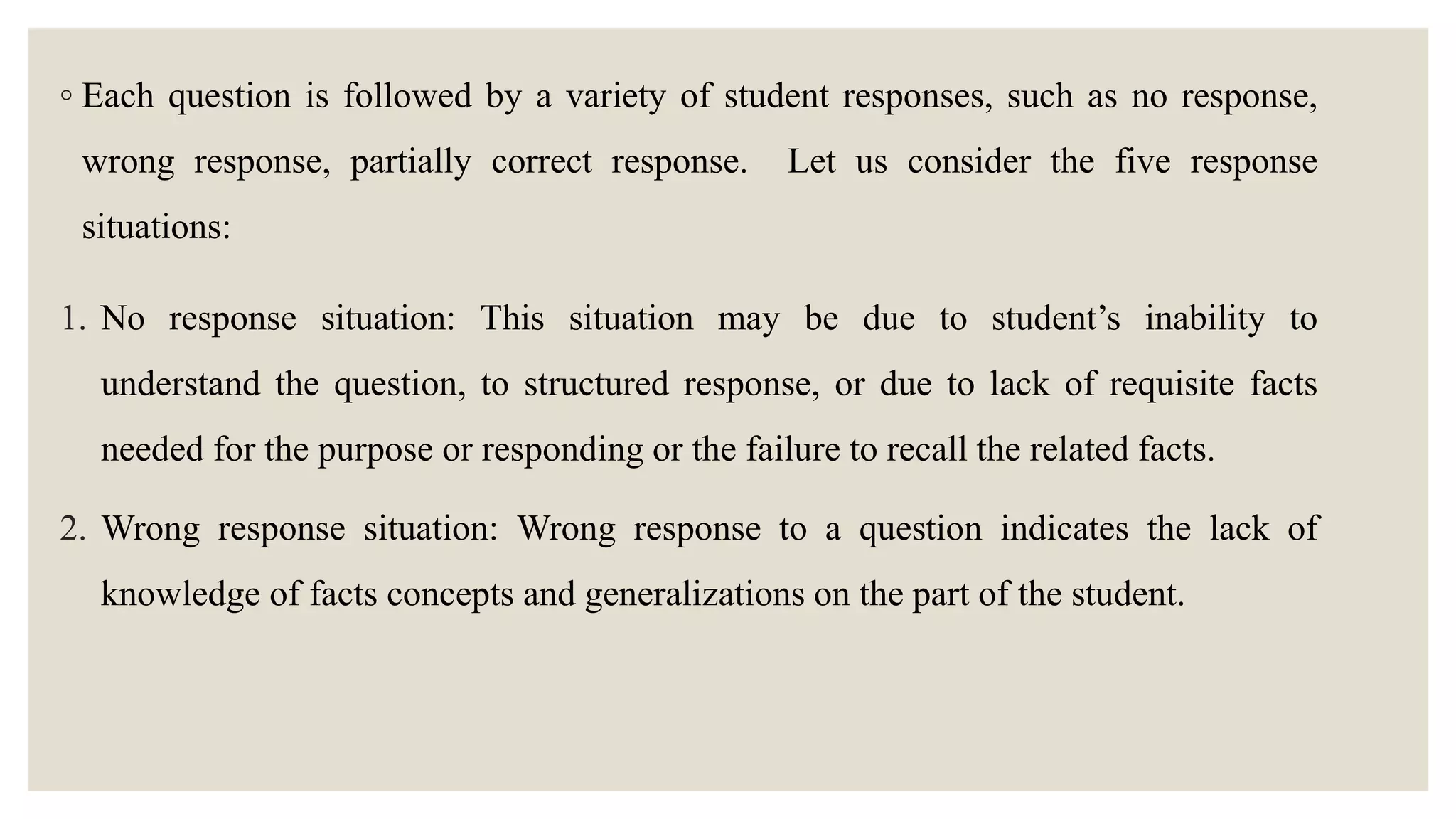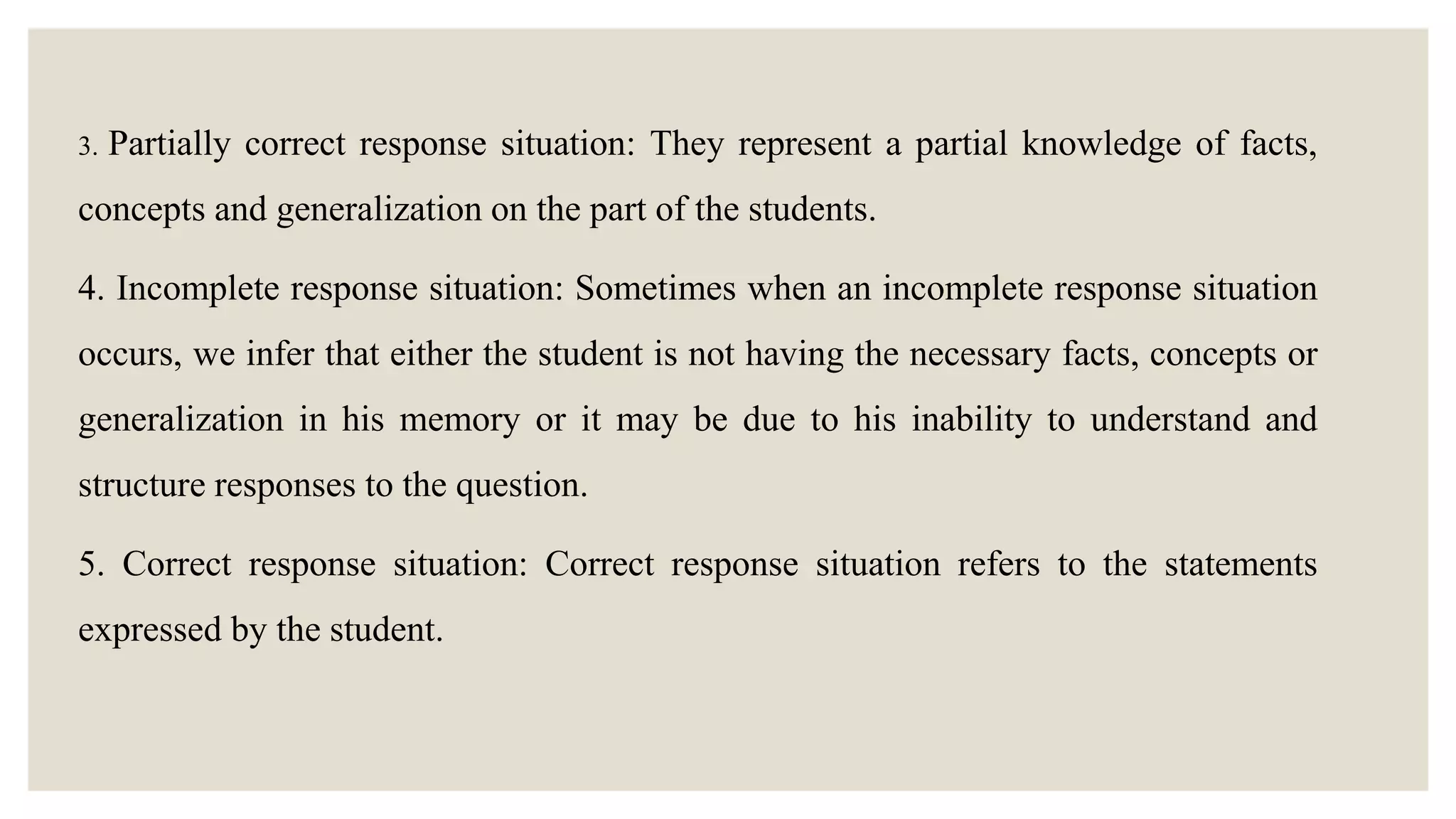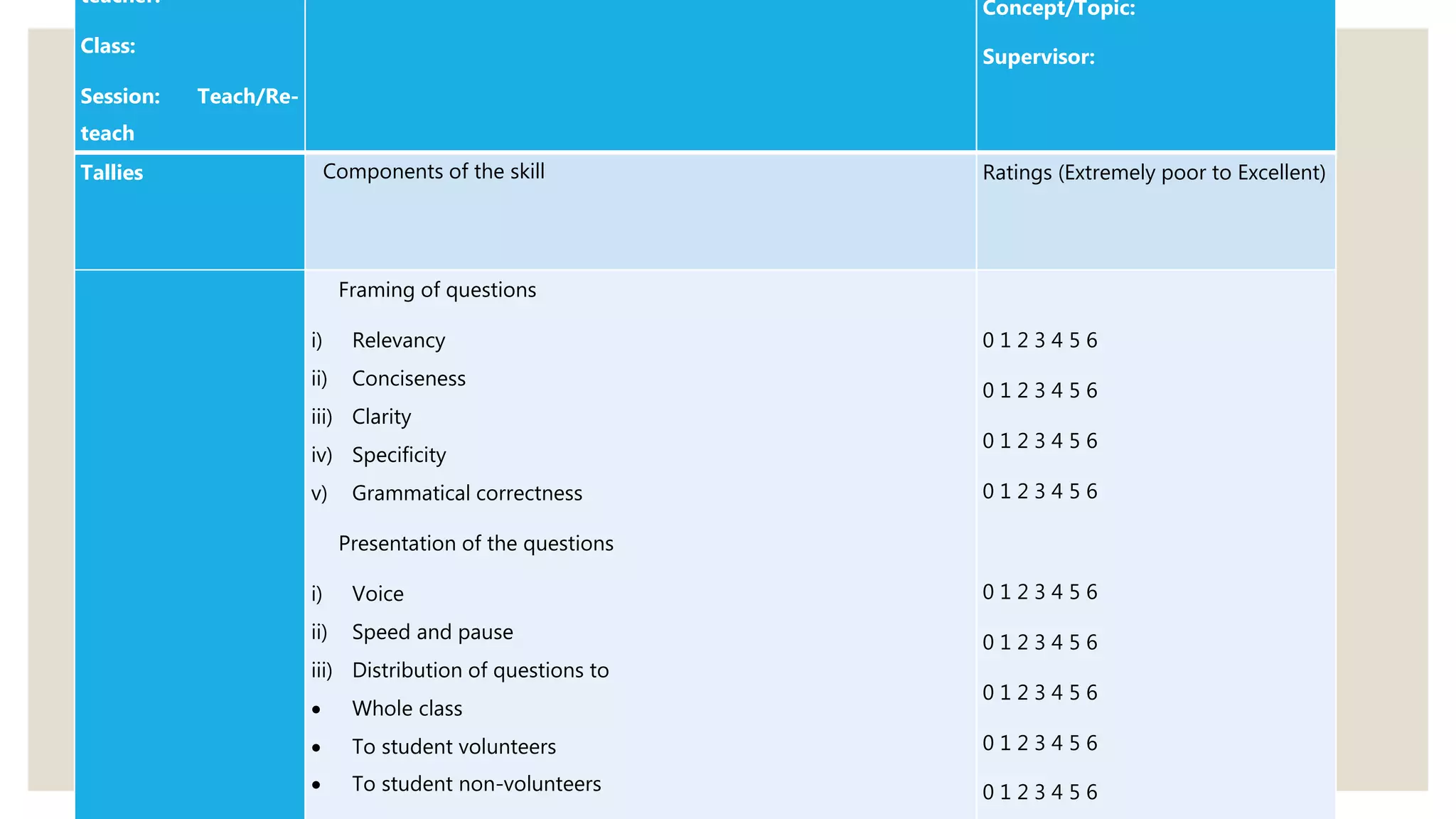The document discusses the skill of fluency in questioning, including properly framing questions to be relevant, concise, clear, specific, and grammatically correct, as well as presenting questions in class with a clear voice, proper speed and pausing, and evenly distributing questions. It also covers common student response situations like no response, wrong responses, partially correct responses, and incomplete responses, and how teachers should address each.
